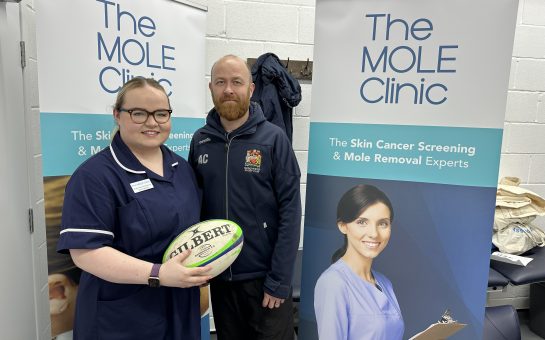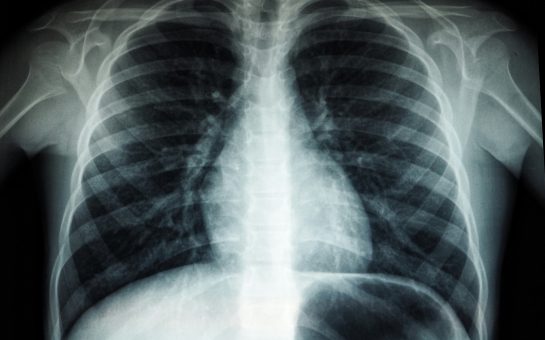It has been over half a century since the contraceptive pill was first made available on the NHS.
Although it has often been heralded as a factor in changing social attitudes towards women, the tiny pill has faced more than its fair share of adversity.
December 4 1961 was a landmark day for women’s rights as the introduction of the pill marked the liberation of women from the fear of pregnancy and enabled females to embrace their sexual agency.
Initially, the pill was only for married women, but this changed in 1967. This coincided with the 1967 Abortion Act, a revolutionary piece of legislation that enabled doctors in Great Britain to perform abortions lawfully and safely.
Fast forward 57 years and the pill is still the most popular form of contraception (aside from male condoms) in the UK, despite other options that are now available.
There are two types of pill – the combined pill and the “mini pill,” which only contains progestins.
There are many brands of the combined contraceptive pill, but all of them contain the same type of synthetic oestrogen (ethinyl estradiol) and one of eight synthetic progesterones (progestins).
The synthetic oestrogen prevents the body from releasing an egg every month. Meanwhile, the progestin thickens the cervical mucus to not only make it difficult for the sperm to reach the egg, but also makes it harder for the fertilised egg to latch onto the uterus and start growing.
That sounds brilliant, but many women are not aware of how synthetic hormones can wreak havoc with our own hormones. When I visited a GP for the pill for the first time, I was asked three questions:
- Do I suffer with migraines?
- Do I smoke?
- Is there a history of blood clots in my family?
No, no and no. I was fine to take the pill.
Yet I didn’t expect the side-effects. I have had to switch pill brands four times because I’ve suffered side-effects from extremely heavy periods to intense panic attacks and paranoia. My GP never took me seriously and simply just prescribed me a pill that contained a different progestin.
I am not alone.
The pill
Prudence Flavin, 22 from Truro, Cornwall relies on the implant for contraception, but also used the combined pill Regivedon to regulate her periods. She recently had a terrifying experience when she had her implant replaced and realised the negative effects the pill had on her body.
“I recently had my implant replaced and the doctor had to dig through my arm and covered me with my own blood. It had sunk so deep that I had to have stitches after.
“I was also on the pill for three years and I went from a size 8 to a size 14. I’ve been off it for a month and I’ve lost almost a stone without any change in exercise and diet.”
However, Katie Williams, 24 from Stirling, Scotland has had a different experience with Regivedon: “I hear a lot of people say the pill affects them badly, but I have never had any of the side-effects, not even drastic weight gain.”
Implant
The pill is not the only form of contraception available for women. Another popular form of birth control is the implant, a small flexible rod that is placed under the skin in your upper arm. It releases progestogen into your bloodstream to prevent pregnancy and lasts for three years.
In 1993 Norplant, which consisted of six progestogen (levonorgestrel) releasing rods, was introduced in the UK.
However, this was replaced by Implanon, a single rod implant containing etonorgestrel, six years later. In 2010, Nexplanon was phased in to replace Implanon. These two implants are very similar, except that Nexplanon is radio-opaque and the insertion procedure is different.
Emma Allen, 30 from Tarporley, Cheshire has experienced some unwanted side-effects from her recent implant, but her positive experience with previous implants has not persuaded her to try a different contraceptive method.
“I didn’t have any issues when I initially got the implant nine years ago. I then had it removed to have my second child and since then I’ve had numerous issues with my menstrual cycle, sometimes I’d bleed for three weeks at a time.
“My latest one, which is due to run out in May, has already failed so I’ve been put on the pill. Other than that, it’s done its job and I’ll definitely continue on the implant in the long term.”
Unfortunately, Andreia Dias, 25 from Kettering, Northamptonshire does not sing any praise for the implant.
“I was on it for four months before having it removed. At first, everything was going ok and then a month into it I had my first period, but it didn’t stop.
“I was on my period continuously for three months with about two days between each one. I ended up in hospital because I was losing too much blood and was in a tremendous amount of pain. I became anaemic.”
The coil
Another non-permanent option of contraception are intrauterine devices, or IUDs. One of the most appealing factors for opting for the IUD is that there are no hormonal side-effects (unlike the pill and implant), such as acne, headaches or breast tenderness.
The IUD is a small, T-shaped plastic and copper device that is put into your womb via the uterus. Copper IUDs were first introduced in 1969 but prior to this, IUDs were made from silver, plastic… and even a ring of silk worm gut.
The IUD is often referred to as the “coil” and releases copper into the womb to prevent pregnancy for between five and ten years. When inserted correctly, the coil is more than 99% effective.
However, many women have complained about the pain experienced during the initial fitting of the coil, as well as during the process of having it removed.
Real life story: If you’d suffered because a #contraceptivecoil or #iud was put in wrong? We can help you get answers. https://t.co/cCwhuzSqRP
— Medical Accident Group (@MedicalAccGroup) November 29, 2018
Zara Reid, 19 from Bournemouth resorted to the coil after having negative past experiences with the pill. Having the coil fitted, however, was not an easy or pain-free procedure.
“My experience leading up to getting the coil was very scary and I had almost everyone in my ear telling me it was more painful than childbirth.
“The actual experience was honestly as painful as everyone was saying and I almost passed out from the sheer pain and longevity of the whole process.
“However, the next day I couldn’t feel a thing and was back to normal and super happy that I’d done it. I definitely think I would have it replaced when the time comes because it has been my best method of contraception, so I wouldn’t hesitate to carry on having it until I want kids.”
Sterilisation
Some women know from a young age that they never want children. However, doctors are not keen to do tubal ligation on childless women in their prime child bearing age.
Kim McIntyre, 51, is originally from Logan, West Virginia, but now lives in London with her British husband. After a pregnancy scare, she opted for tubal ligation at the age of 23, but only after sending forms to the state health department.
“They turned me down, so I wrote a letter of appeal and told them if they did not do the tubal ligation and should I become pregnant, I would immediately get on welfare and the state could provide me with food, housing, healthcare for me and my child for the next 18 years.
“I received a letter a couple of weeks later that I had been approved. It was the best healthcare decision I ever made.
“I got a lot of criticism for not having kids, but my husband is 20 years my senior and he had three kids already, so he was supportive of my decision not to have children.
“I did not want to have to take the pill all my reproductive life because of the side effects. Pregnancy terrified me, and abortion just wasn’t easily procured in West Virginia at the time, which would have been the only thing I would want to do.”
The Contraceptive Pill: How Safe Is It? review – a welcome antidote to the scare stories https://t.co/9GnprsHQWq
— The Guardian (@guardian) November 21, 2018
At the end of the day, what works for one woman may not work for you. Our bodies are complicated, our hormones can be wild. It is important to research hormonal and non-hormonal methods to make informed choices on what is best for our bodies.
Love it or loath it, the pill and its contraceptive cousins are here to stay, preventing unwanted pregnancies and allowing us to have more control over our body and how we choose to live our lives.
Image courtesy of Nucleus Medical Media via YouTube, with thanks.



